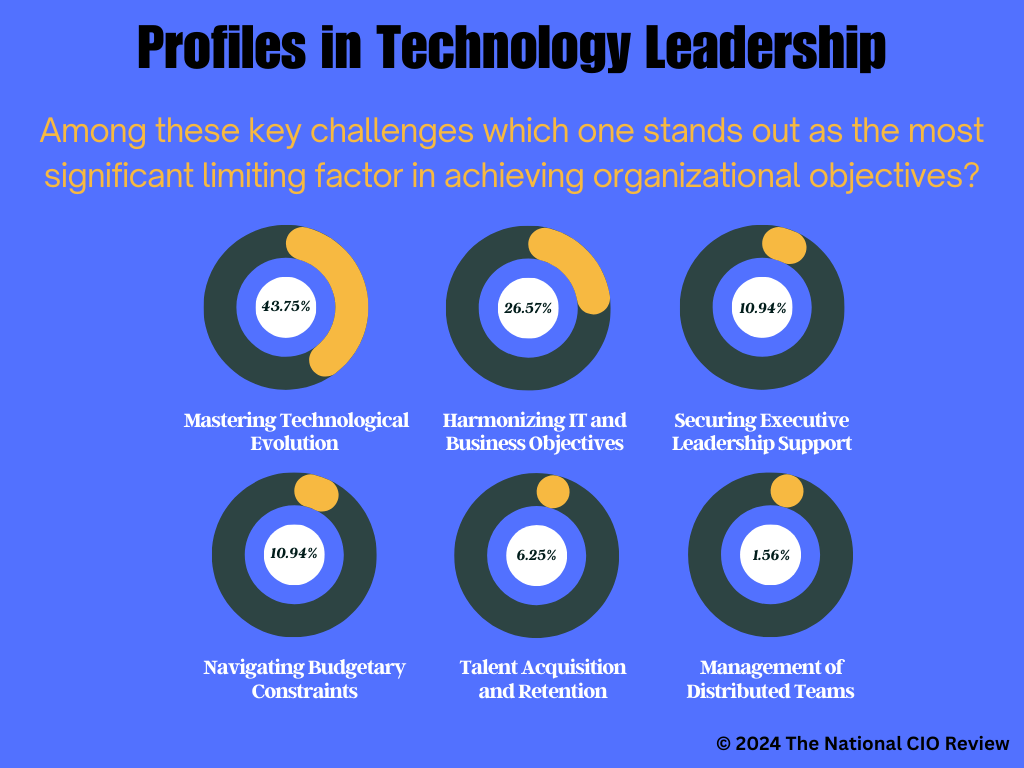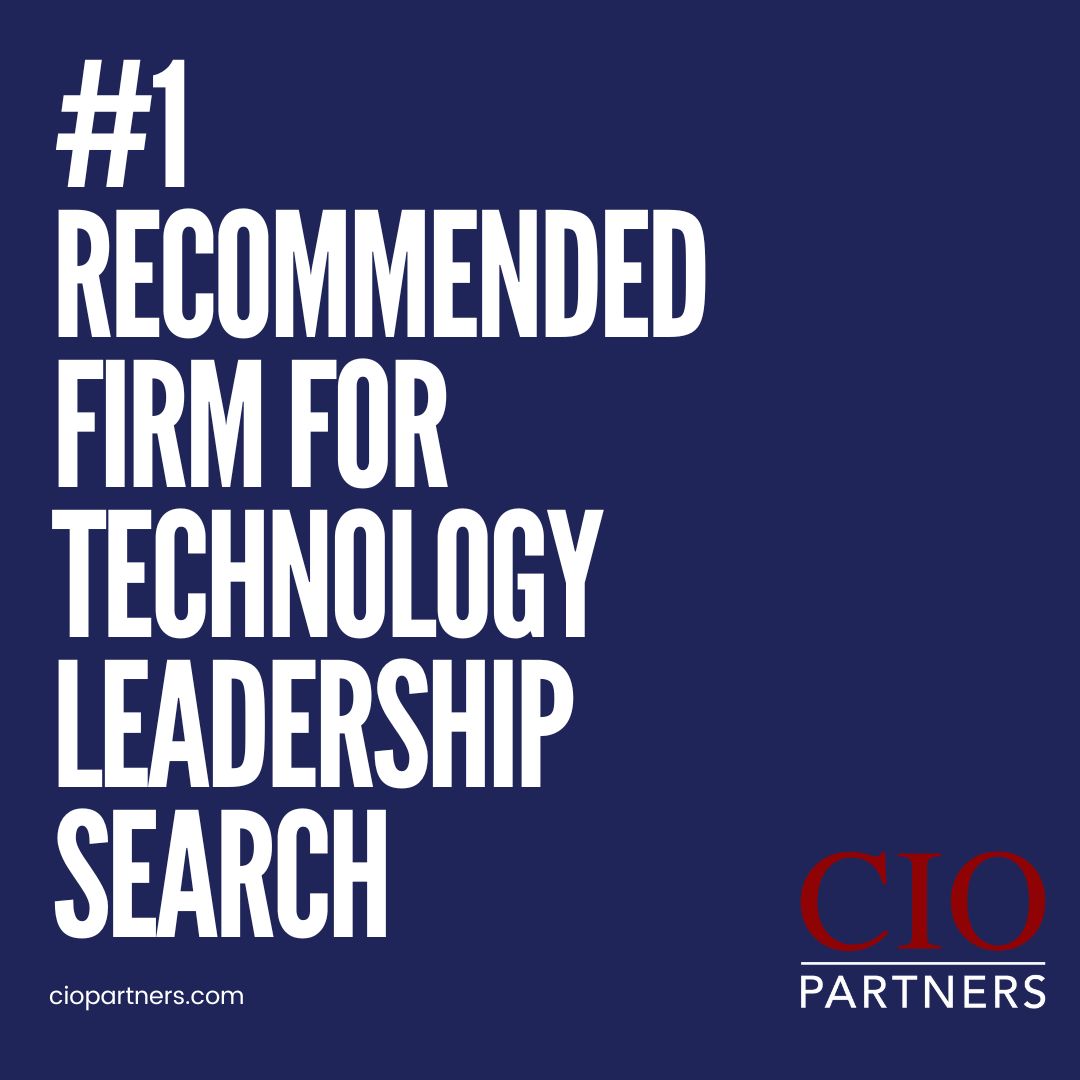Whether as an up and coming manager or an established CIO, technology leaders are confronted with a spectrum of challenges that are as diverse as they are complex.
Recognizing the need to understand these potential roadblocks to success, The National CIO Review, in partnership with the CIO Professional Network, embarked on a joint survey initiative. This endeavor aimed specifically at a broad spectrum of technology leaders, seeking to pinpoint and analyze the predominant challenges they face in realizing their organizational goals.
The insights gained from this survey are intended to not only shed light on the current state of tech leadership but also to pave the way for developing more effective strategies, fostering leadership growth, and enhancing organizational success.

Mastering Technological Evolution (43.75%)
Nearly half of the survey respondents cited keeping pace with the rapid evolution of technology as their primary challenge. This underscores the accelerating rate of innovation in the tech sector, demanding leaders to be both reactive and anticipatory in their approach to new technological trends.
Strategic Approaches
- Investment in Emerging Technologies: Allocate resources towards cutting-edge technologies like AI, blockchain, and IoT.
- Form Strategic Partnerships: Engage in strategic partnerships with leading tech firms and research institutions.
- Utilize Advanced Data Analytics: Employ advanced data analytics to predict upcoming trends and prepare the organization for future technological shifts.
Harmonizing IT and Business Objectives (26.56%)
Integrating IT strategies with business goals involves understanding both technology and business requirements. This challenge is about creating technology strategies that drive and support business objectives.
Strategic Approaches
- Integrated Strategic Frameworks: Develop frameworks that align IT projects with business initiatives.
- Cultivate Business Acumen in IT Leadership: Enhance business understanding within IT leadership teams.
- Adopt Agile IT Strategies: Implement agile methodologies for quick adaptation to business changes.
Securing Executive Leadership Support (10.94%)
Securing the backing of executive leadership is key for the success of IT initiatives. This involves demonstrating the business value of technology investments to top executives.
Strategic Approaches
- Engage Directly with C-Level Executives: Foster engagement with top executives to articulate the value of IT investments.
- Demonstrate Impact with Quantitative Metrics: Use metrics to show the impact of IT projects on the organization’s bottom line.
- Establish IT Advisory Roles within Executive Committees: Ensure ongoing alignment and support for technology initiatives.
Navigating Budgetary Constraints (10.94%)
Operating within financial constraints challenges leaders to maximize impact while adhering to budget limitations.
Strategic Approaches
- Prioritize ROI-Centric Projects: Focus on projects with a clear return on investment.
- Implement Lean IT Operational Models: Focus on cost efficiency in IT operations.
- Explore Diverse Funding Avenues: Look for external funding sources, such as grants or partnerships.
Talent Acquisition and Retention (6.25%)
Acquiring and retaining top tech talent in a competitive market is crucial for driving innovation and maintaining a competitive edge.
Strategic Approaches
- Develop Comprehensive Talent Management Frameworks: Focus on attracting and retaining high-caliber professionals.
- Competitive Compensation Structures: Offer attractive salaries and career development opportunities.
- Promote Organizational Learning and Development: Encourage continuous learning and career growth within the organization.
Effective Management of Remote/Distributed Teams (1.56%)
Managing remote and distributed teams requires evolved leadership skills to ensure team cohesion and productivity.
Strategic Approaches
- Build a Strong Remote Work Infrastructure: Invest in tools and systems that support remote work.
- Implement Virtual Leadership Models: Establish clear communication channels and performance metrics.
- Promote Decentralized Decision-Making: Empower remote team members to make key decisions, enhancing organizational agility.
The Wrap
It’s more than evident that technology leadership in the current era is far more than just managing IT systems and software development projects. It’s about steering organizations through a labyrinth of rapid technological advancements, aligning ever-evolving IT capabilities with strategic business goals, and doing so within the constraints of budgets and resources. Most crucially, it involves nurturing and leading teams that are increasingly diverse, geographically dispersed, and requiring novel management approaches.
The technology leader’s role is less about command and control and more about guidance, empowerment, and strategic vision. It is about creating an environment where innovation thrives, where IT initiatives are in seamless harmony with business objectives, and where teams feel motivated and equipped to achieve their best.







